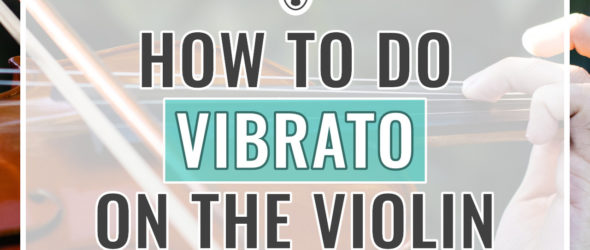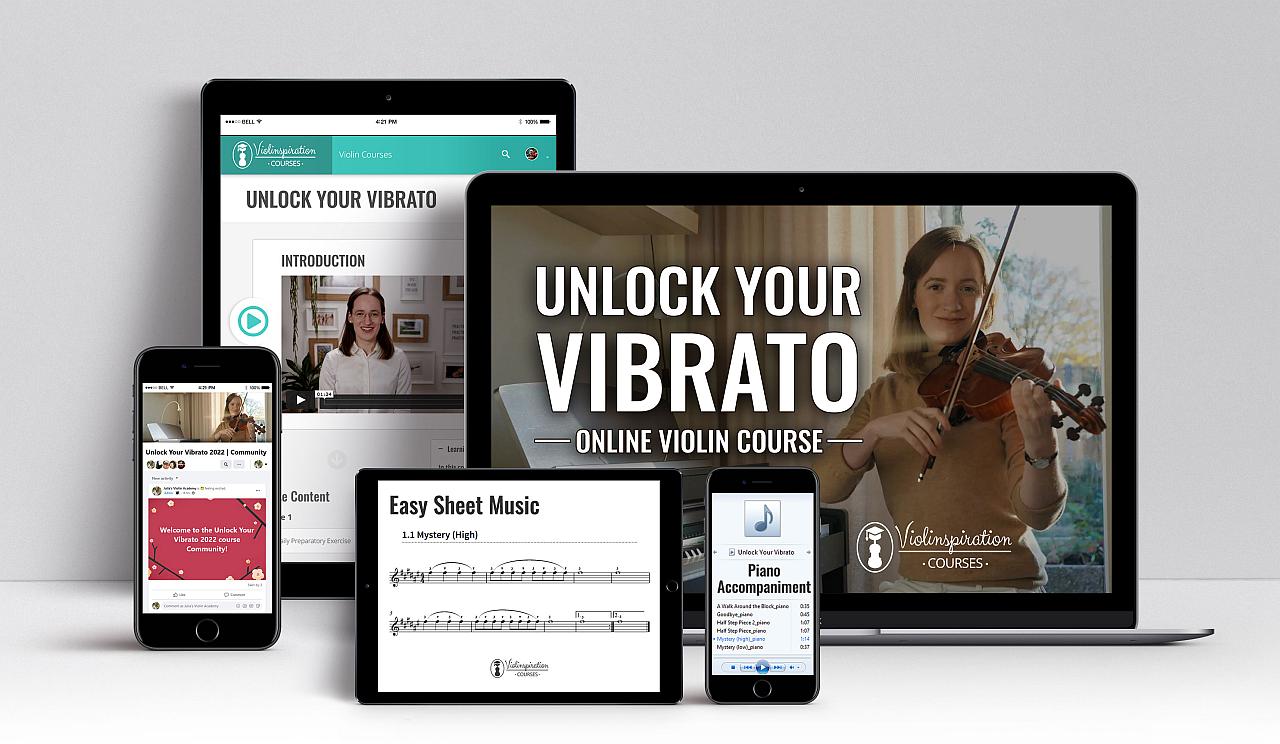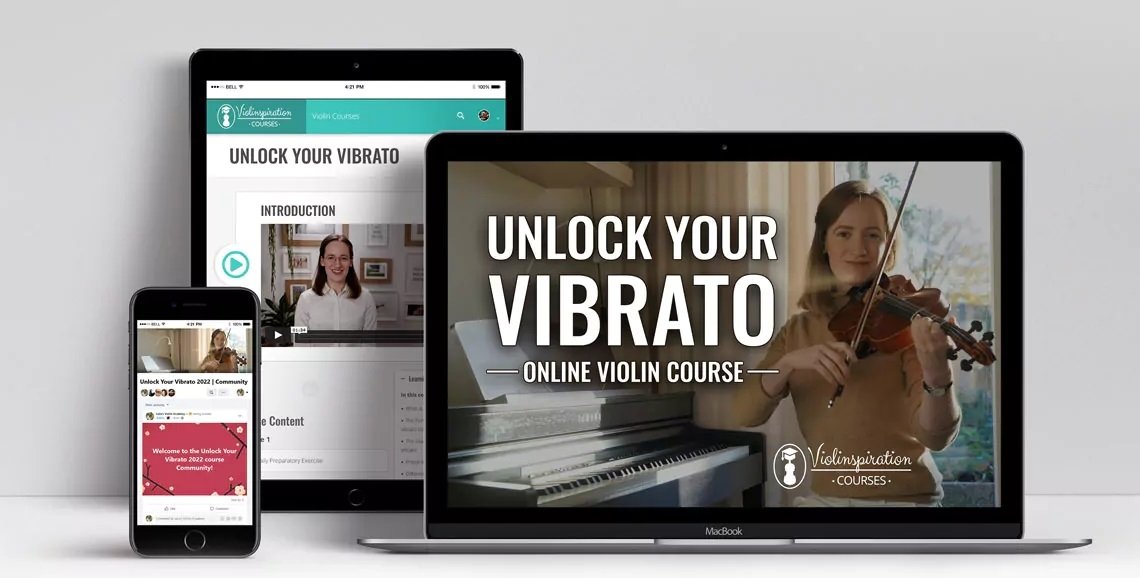Learn the violin vibrato technique in a few easy steps!
Learning violin vibrato is a huge step in working towards playing more musically and adding to your musical expertise. After you have learned the basics of posture, playing in tune, counting rhythm well, you will likely want to learn vibrato next.
Make sure you are comfortable with playing in tune at least in the first position without tension. This guide is meant for beginners who generally play more or less in tune, so if you are not quite there yet, do not feel bad. Keep practicing and meet me here when you can play in tune regularly. I’ll be waiting!
There are many pre-vibrato activities I will share that promote flexibility and begin to teach your hand how to get loose. It is important that your left hand is free of tension. You can begin these even away from the instrument and then begin implementing them to the violin itself. It is nice to focus on one thing at a time, so practicing getting your hand and arm loose away from the instrument can be helpful.
In this guide, I will explain the different types of vibrato, offer exercises to develop beautiful vibrato, and answer the most asked questions. Always keep in mind that vibrating is meant to be supplementary to good posture and playing in tune.
What Are the Types of Vibrato on Violin?
There are three types of vibrato on the violin: arm, wrist, and finger. The most popular are arm and wrist vibrato, but all three require the left hand and arm to be loose. Each one differs, e.g. in speed, which makes them better suited for various musical purposes.
I would recommend starting with basic wrist and arm vibrato before starting to work on the finger kind because it is much more difficult.
Ideally, a player can vary the speed, width, and intensity of each vibrato depending on the music played. Often mixing each type of vibrato throughout a piece can add a variety of emotions and moods.
A pro-tip is to make sure you are starting on the note and oscillating below. When you are first learning the types of vibrato, go slowly starting from the note and audibly hear the note flattening.
Arm vibrato
Arm vibrato is a great place to start learning how to vibrate. The impulse stems from the elbow and forearm, not the wrist. Remember, vibrating should start from the note and then go backward. Here, the finger and hands respond to the arm’s movement so try to keep the entire arm one unit while moving back and forth. Arm vibrato creates a wide oscillation and naturally is very audible. It is slower, broader, and perfect for heart-wrenching music that is extremely emotive.
Wrist vibrato
Wrist vibrato is another type of vibrato technique where the base of the wrist moves back towards the pegs, while the rest of your forearm stays in its starting position. The fingers thus move along with the wrist in a rocking motion. This type is also very audible and typically has a wider, sweeter sound but can be faster than arm vibrato. It comes with an intensity that arm vibrato does not have, but is still sweet and colorful.
Finger vibrato
Finger vibrato stems from the quick impulses from the finger muscles. It requires the most control and is characterized by quick, narrow movement. It is often best for when you are playing in high positions and need clean intonation that you wouldn’t get with a wider vibrato. Finger vibrato relies on the base knuckle being able to be loose. Because the knuckles have more subtle movements required, this kind of vibrato can be more difficult to isolate and control. It is said that this type of vibrato was used in the times of Mozart. Nowadays, wrist and arm vibrato are the most common types of vibrato.
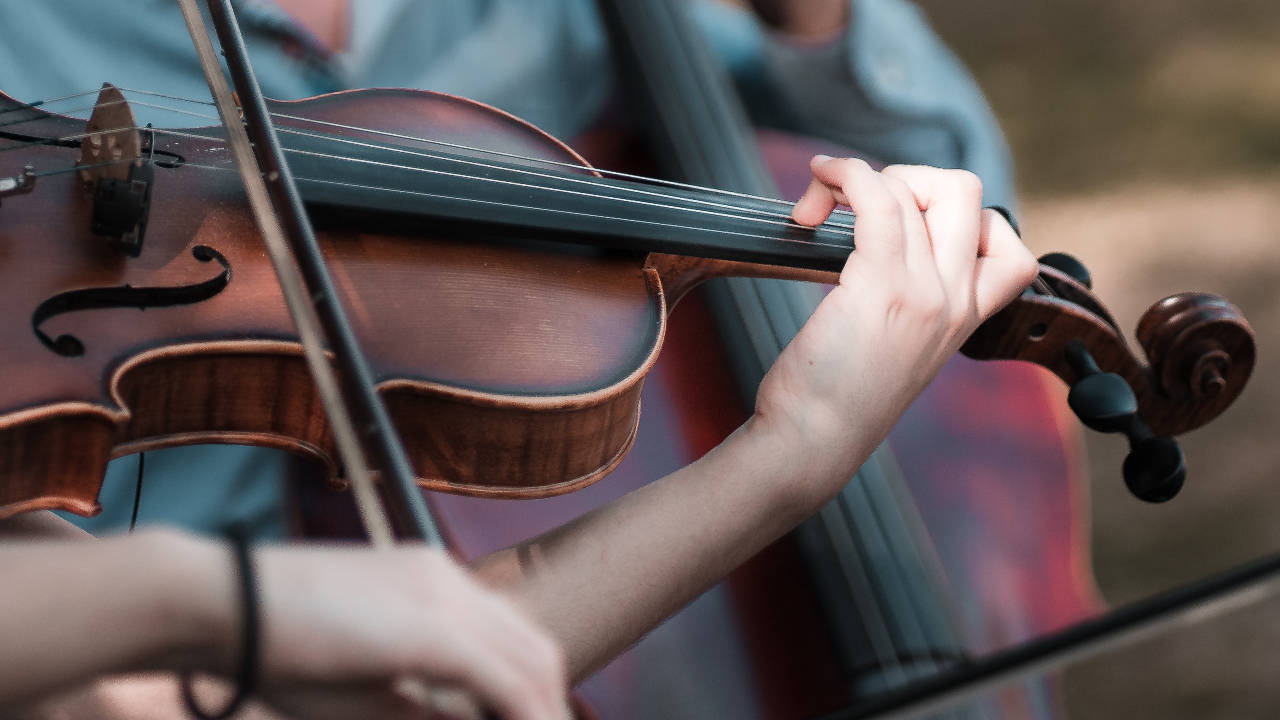
How to Develop a Beautiful Vibrato in 8 Steps
Learning vibrato requires patience, but here are some great starting exercises to promote flexibility. These will feel extremely unnatural and the sound will not be smooth at first. Instead of being discouraged or tensing up when not hearing it sounds good, keep your body relaxed, especially the thumb. Practice these exercises slowly and with the metronome.
I recommend starting each exercise with the first or second finger, as they are the strongest and will yield results quicker. Pinky vibrato is something all violinists struggle with!
Here are the eight, or actually nine, steps that will help you learn vibrato on the violin:
0. Believe that you can do it
Even before you do your first warm-up exercise before the actual vibrato exercises, there is yet another preparatory step: it is to believe that you are able to learn how to do vibrato on the violin.
If you’re starting to play the violin as an adult, maybe you’re even retired, it may seem so overwhelming to constantly keep a good posture, play in tune, learn all the notes, and avoid scratching, not to mention finding a little bit of time for the daily practice while there are other duties waiting for you. All of that can make you feel that the vibrato technique is way out of your reach.
But is it so? Let me tell you from my experience that a student of any age can learn vibrato.
What you need are the exercises listed below, a bit of vibrato practice every day with a lot of patience for yourself but first, imagine that it is doable for you.
Learning this technique is a long journey for all violinists. Remember that if you start the journey, you will get there at some point!
1. Start slow with pre-vibrato exercises to warm-up
Start by loosening up your fingers. Away from the instrument, make a circle with any left-hand finger and the left-hand thumb, then bend and straighten the joint a few times. Do this with each individual finger. It is likely that the pinky will have the most trouble, so give extra attention to it.
Then, to open up the arm motion for arm vibrato, get your violin and keep your hand and wrist in one position and simply shift from the first position to the third position. Put the 3rd finger down in first position and “wipe the strings” as if you are cleaning them from first position to third position. When you do this, make sure to release the first joint of the fingers.
Julia’s Violin Academy members only: among lessons in the Academy, you will find other easy preparatory exercises:
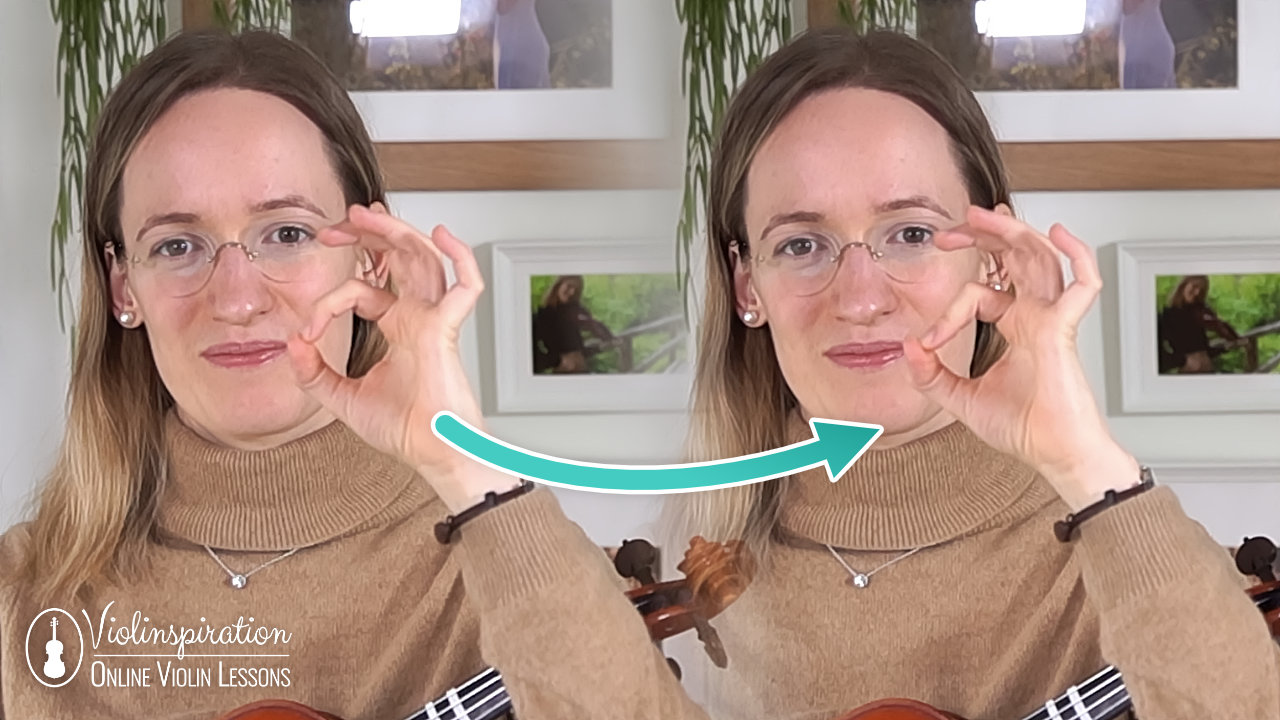
2. Practice the large motion on the violin by shifting in half steps with one finger
With your violin well-supported, start with your first finger down and move the entire hand and arm back a half step on the fingerboard. This movement will be led by your elbow so do not let your wrist collapse. A place to start is to exaggerate this motion to play the B note and then B flat on the A string. Using a metronome set to a slow tempo, practice each finger slowly by getting one oscillation in a beat, then increasing it to 2, 3, 4, all the way up to 10.
Gradually, you won’t be going all the way back to B flat – just like I show in this vibrato exercise in my Academy.
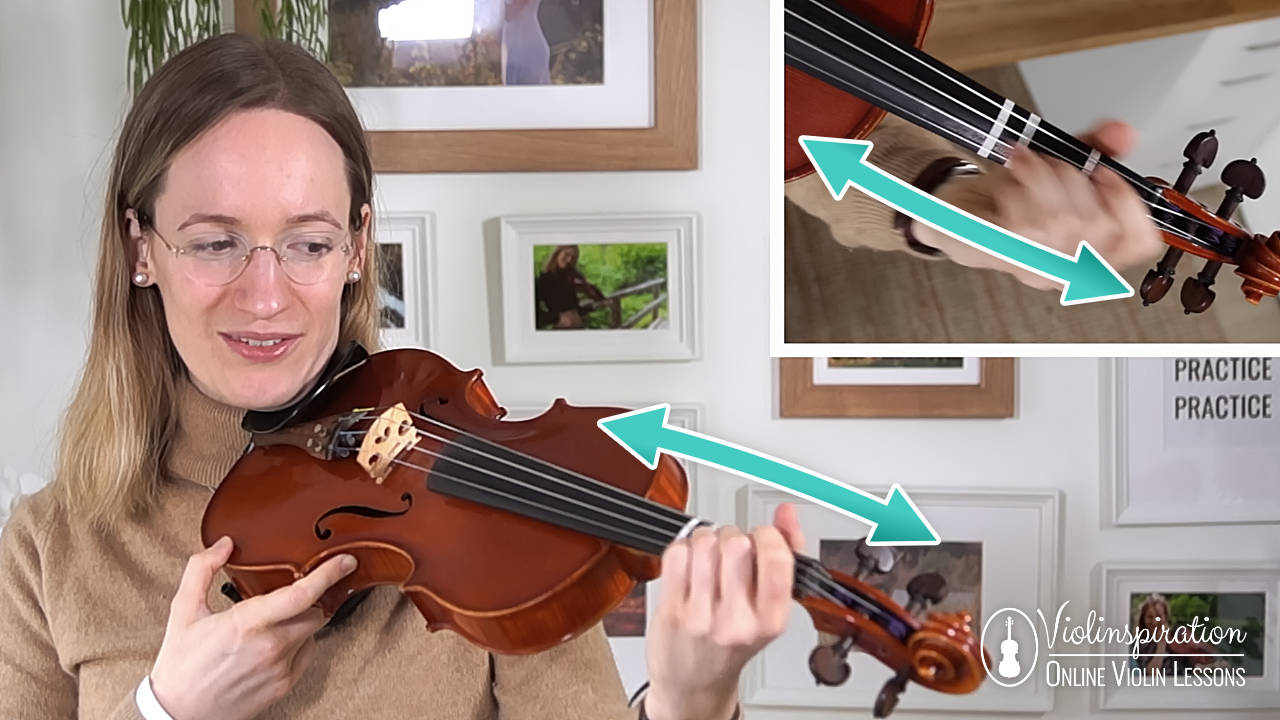
Repeat this exercise with all your fingers.
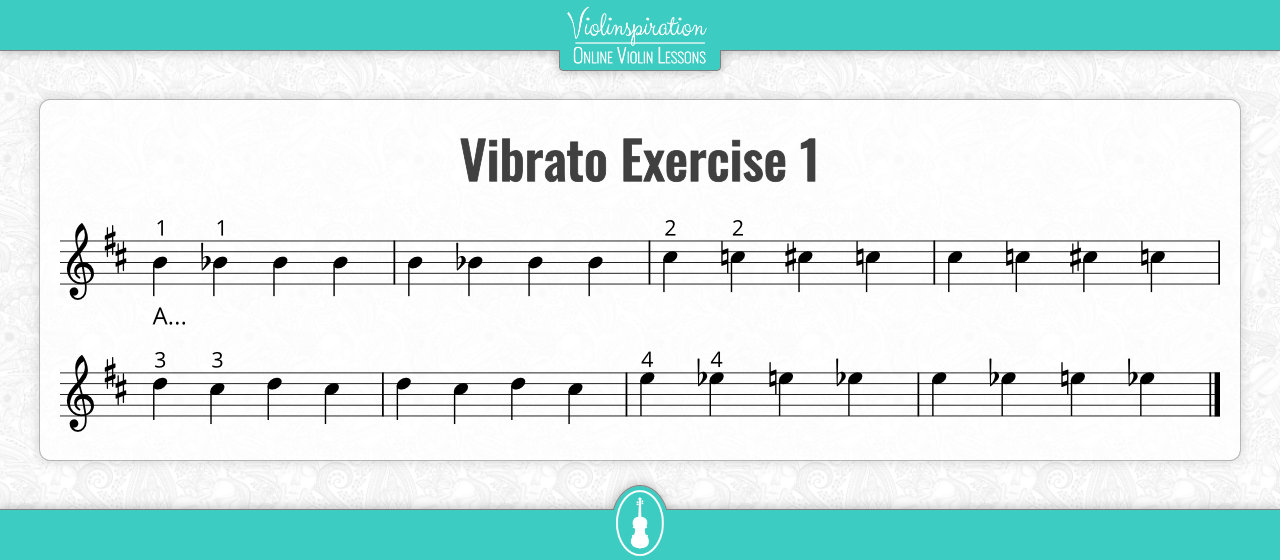
3. Shorten the movement by isolating the wrist
To do wrist vibrato, which is a little bit narrower than arm but wider than finger vibrato, start by creating a knocking motion with your wrist. Put your finger down on the note and move your wrist back towards the pegs. Your finger should feel like it’s relaxing downwards. You can even actually knock against the pegs (gently) to see if it’s working.
If you’re one of my students at Julia’s Violin Academy, make sure to practice the knocking motion with me at different speeds in this lesson.
If you are not sure which part of your arm is moving, try to repeat the wrist movement away from the instrument and just create that finger circle (finger + thumb) again. Start with your wrist in a neutral position and move it backward. It’s important that your wrist doesn’t come forward beyond its initial position for pitch reasons.
Put on the metronome again and listen for the half-step pitch change as you begin slowly. As you add speed, make sure you are not tensing up any muscles. You might need to stay at a slower speed for a while to train your muscles.
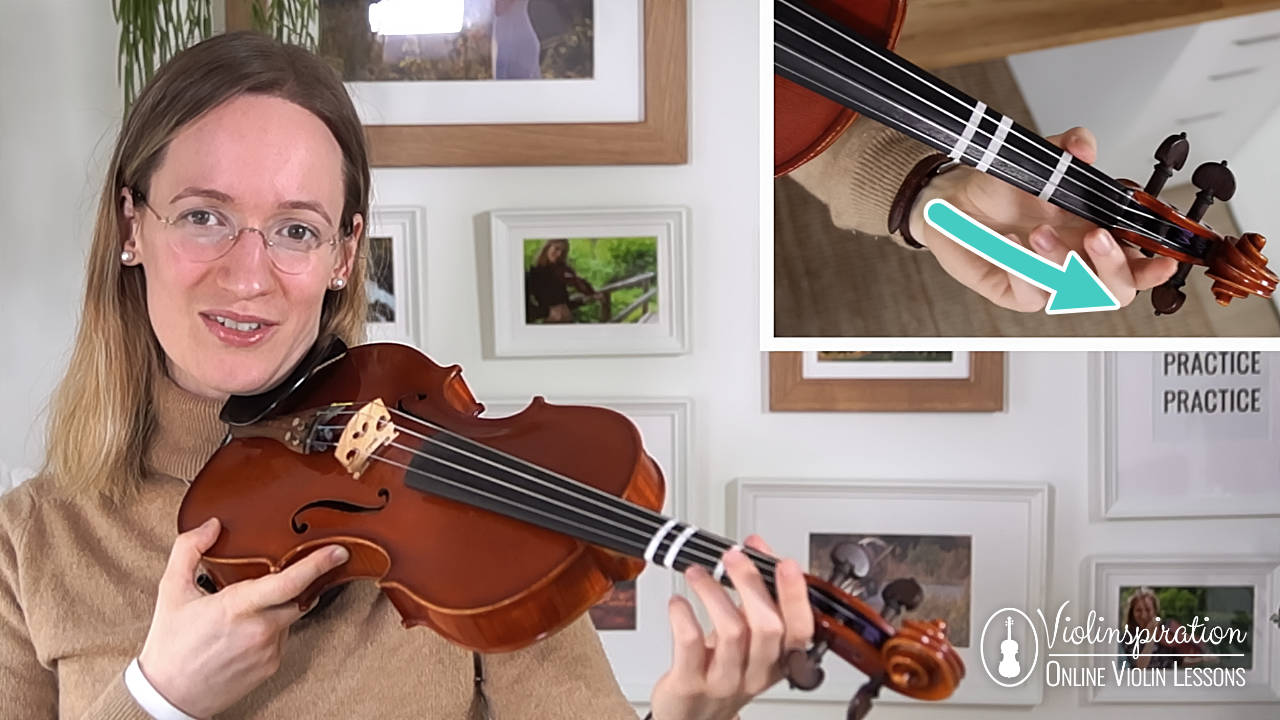
4. Practice vibrato in rhythms with a metronome
Setting the metronome at a slow tempo, move your arm or wrist back in rhythms. Start with changing the pitch once per click so it would sound like this: B on one click, lower than B on the second click. Then, increase to two pitches per click with equal eighth notes. Try doing this with the rhythm of dotted eighth and sixteenth notes afterward, then sixteenth plus dotted eight. Keep adding to these with triplets, sixteenths, and dotted rhythms. This will help build the impulses to be faster, more accurate, and smoother.
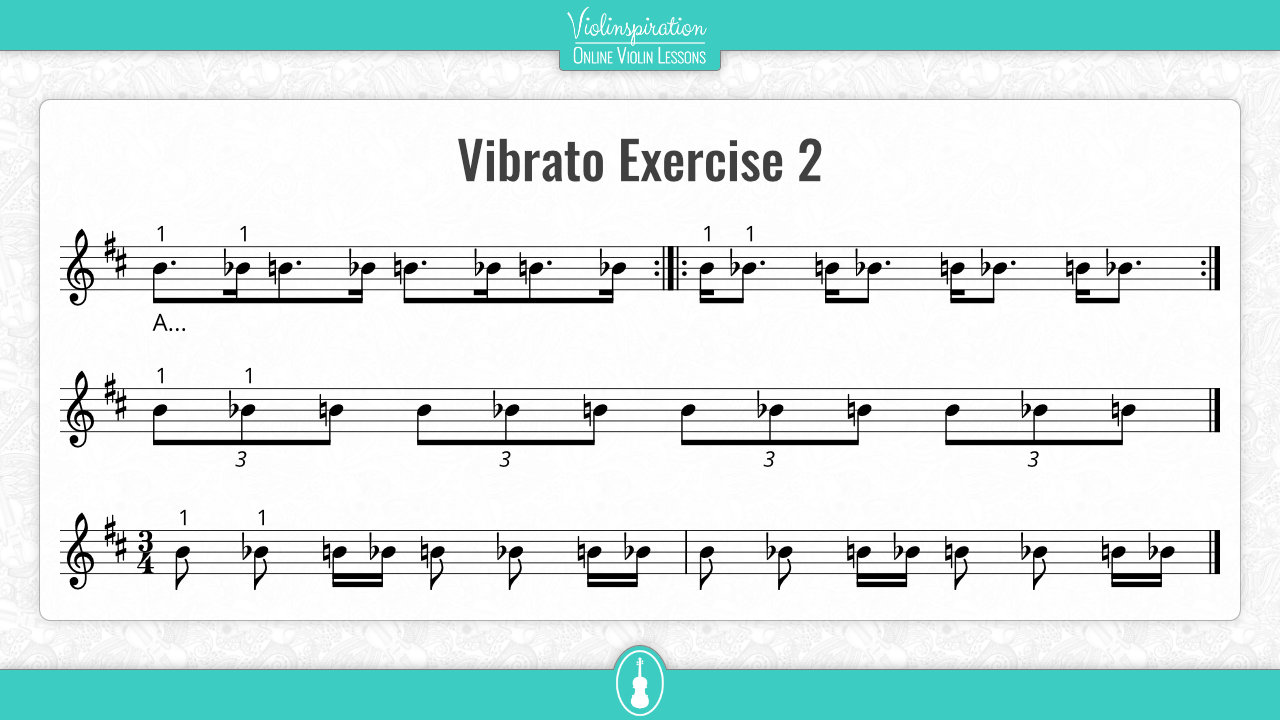
5. Air bow before putting the bow on the string
Putting the motions of the left and right hand together can be difficult and a lot to focus on at once. The hands are doing two totally different things, so to help coordinate, pretend to bow over the violin. The goal for violinists is to have smooth bow changes and not let vibrating affect the bow or vice versa.
Another approach is to reverse the exercise: bow on an open string while making a sliding motion with the left hand. Let’s practice it together in Exercise 4 in the Improver level 5 course (JVA members only).
6. Focus on tone and slow bows with slow vibrato at first
When you finally do coordinate your hands, it is likely that you will be alarmed by the weird sounds coming from your violin. Especially when you are practicing wide movements like half-step motions, it is going to sound like a siren. Relax your right arm and even do a few long, connected bows before adding the left hand.
Keep switching between hands, focusing on each hand individually for a few seconds. The vibrato serves the music, so being able to have a beautiful tone with the vibrato is important.
7. Speed is the name of the game for finger vibrato
Once you’ve built speed with ease, work to incorporate finger vibrato. Finger vibrato is more advanced so I included it later in the steps. It requires the first knuckle of your finger to be loose, so you want to do it with control. Your finger moves much faster against the string, which is why it sounds more narrow and lively. Make sure your fingertip is not pressing down too tightly on the string.
8. Do a little every day
Vibrato takes time to work up to. Keep checking in that you have good posture – relax your shoulder so it is not raised and do not squeeze your thumb while holding the neck of the violin. Set a timer for a short amount of time like 5 to 10 minutes to do these exercises. Maybe focus on just two fingers in one practice session. The vibrato exercises are tiring for your brain and your fingers so don’t push yourself too hard.
Learning vibrato takes patience and dedication, but everyone can learn it!
If you’d like to learn vibrato by following a well-organized course, I’ve got good news for you: I created a step-by-step course tailored to violin adult beginners “Unlock Your Vibrato.”
Click the button below to read more about the course.
FAQ
When you are first starting to develop the vibrato movement, you might wonder about some of the following items. I hope to clarify, inspire, and support you through this journey so check below to see if I answered your questions. If not, feel free to add your questions in the comments below!
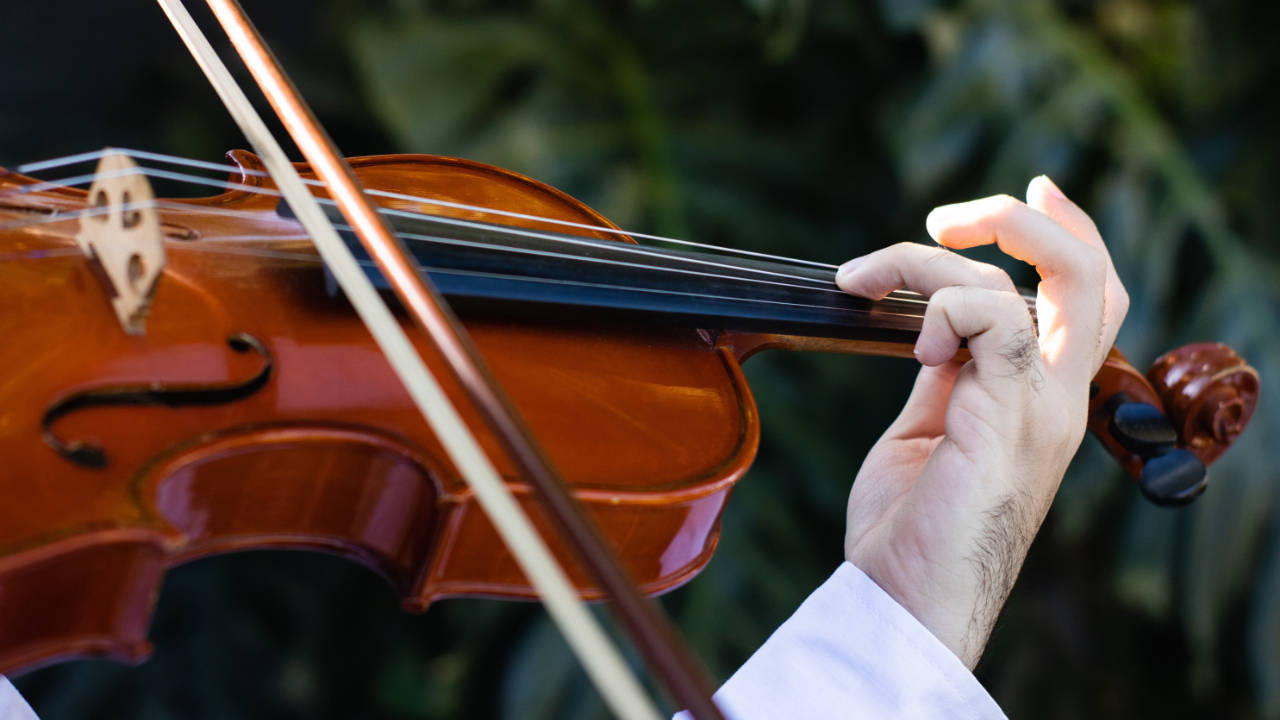
Is vibrato on violin hard?
Vibrato on the violin is hard because it is not a natural motion outside of violin-playing and takes quite some time to learn. However, it is one of the most rewarding techniques you will learn because it makes music so much more beautiful and expressive.
Why is vibrato so difficult?
Vibrato is considered difficult because fingers naturally want to tense up so it becomes difficult to relax hands and not squeeze the neck or on the fingerboard. It also won’t sound good at first, which might be discouraging.
How long does it take to do vibrato on the violin?
It may take ca. 6 weeks of consistent practice to develop basic vibrato movement but in general, learning vibrato doesn’t have a set timeframe. It definitely does not happen in one lesson or overnight, so please don’t have that expectation. It takes a lot of time to work up to and almost all violinists refine their vibrato constantly.
You can start learning vibrato with the exercises in this guide and see how long it takes you – feel free to share it in the comments below!
How can I practice vibrato without a violin?
You can practice vibrato without a violin by doing the following exercises: loosening knuckles by forming a circle with the thumb and alternately straightening and curving the fingers, waving the wrist back and forth, and moving the arm back and forth as a unit.
Final Note
Violin vibrato takes a long time to develop so don’t be discouraged if it doesn’t come naturally or quickly. This is totally normal! Give it some time and special attention and you will be surprised by your progress over time.
In the long term, the goal is to have many different vibrato types in your skillset – with varying speeds, intensities, widths. Ideally, the vibrato motion will continue between changing notes and even bows as well for extra smoothness. If you listen to recordings by Itzhak Perlman or Jascha Heifetz, you will see that everyone uses vibrato but in different varieties, different places to bring out certain notes, and different speeds. Listen to and watch recordings by renowned violinists and while doing so pay special attention to how they are executing vibrato and in which moments.
If you’re still unsure how to start the process of learning the vibrato motion, check out my course “Unlock Your Vibrato”!
Click the button below
to learn more about my step-by-step online vibrato course!
